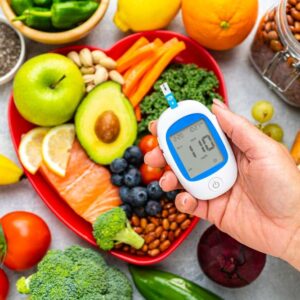
Deadly Health Danger Found in Frozen Foods
- DNA evidence has a new meaning. Find out more…
- Could a “resident”of a Washington factory be threatening your life?
- Two ways to avoid this slow-motion attack.
Dear Reader,
Buying frozen foods is a standard practice for most folks.
In fact, 99 percent of U.S. households consume frozen foods, making the frozen food industry $31 billion annually.
And while it has seen a bit of a decline in sales lately, chances are you have at least a few frozen food items in your freezer right now.
Which is exactly why you need to keep reading this.
Even though frozen foods are of endless variety, one item in particular might come to mind for you — produce.
Frozen vegetables and fruits are a convenient and often inexpensive way to add a few extra vitamins, minerals, and flavors to any meal. Plus, with frozen fruits and veggies, you don’t have to stick to what’s in season — you can eat what you want when you want it.
And you don’t have to worry about the dangers of BPA like you do with canned veggies.
However, this doesn’t mean you’re out of the danger zone.
Last week, the CDC and FDA ordered a voluntary recall of over 350 frozen produce products due to an outbreak of a deadly food-borne disease. We will share more specific brand information later on.
You might be thinking, How on Earth can bacteria survive in the freezer?
Well, prepare yourself — this microbe doesn’t die easily.
![]() An Outbreak in Slow Motion
An Outbreak in Slow Motion
Thanks to a new tracking tool, the CDC found that the current outbreak is caused by the same strain of Listeria responsible for outbreaks in 2013, 2015, and the one in February of this year. The CDC confirmed this through the bacteria’s DNA.
Meaning this outbreak has been unfolding in spurts over the last three years.
Frozen produce manufactured in Pasco, Washington, by CRF Frozen Foods is the “likely source” of this outbreak, according to the CDC.
The CDC explains a little more about Listeria:
Listeria monocytogenes is commonly found in soil and water. Animals can carry the bacterium without appearing ill and can contaminate foods of animal origin, such as meats and dairy products… When Listeria bacteria get into a food processing factory, they can live there for years, sometimes contaminating food products.2

Source: New CDC Vital Signs: Listeria Food Poisoning Striking Hard at Nation’s Most Vulnerable
The University of Georgia’s Center for Food Safety director, Michael Doyle, thinks one reason for this prolonged outbreak is “resident” Listeria. Unlike their “transient” counterparts that contaminate food as they move through the processing plant, resident bacteria are able to establish themselves in the processing plant and survive for many years.
He went on to say, “The organism’s quite hardy.”3

Magnified Listeria bacteria photo credit: study.com
So far, this hardy strain has taken the lives of two people, one in Maryland and one in Washington state, and hospitalized six others.
However, since the infection caused by Listeria (listeriosis) kills one in five victims, making it more deadly than E. coli and salmonella, it’s likely there will be more deaths and illnesses reported in the days to come.4
Older adults, pregnant women, newborns, and those with weakened immune systems are more susceptible to infection.
If you’re an older adult, your risk of infection greatly increases. In fact, anyone over 65 is four times more likely to contract illness from Listeria than the general population.
![]() Icy Precautions
Icy Precautions
The best way you can protect yourself from this outbreak is to discard any contaminated products from your freezer.
Check all items in your freezer against the FDA’s recall list. It provides detailed brand and SKU number information. If any of your items match up, you can return them for a refund or simply pitch them. Click here for the FDA recall list.
But that may not protect you from the long reach of this slow-motion outbreak.
So here’s an extra tip for added protection…
Buy a thermometer.
As we mentioned before, these bacteria can live in cold temperatures. However, experts suggest keeping your freezer at 0 F (-18 C) in order to halt Listeria growth.5
And the best news, you can purchase a commercial-grade appliance thermometer for around $6 on Amazon. Click here to check it out.
While you’re there, you might want to pick up one up for the fridge too. 40 F (4 C) or below is the optimal temperature for your fridge to halt Listeria growth on fresh foods.
If you would like some additional tips on how to reduce Listeria exposures from fresh produce, click here to read a previous article from Living Well Daily.
Live well,

Natalie Moore
Managing editor, Living Well Daily
Ed. Note: Please send your feedback: nmoore@lfb.org – and click here to like us on Facebook.
Sources
[1] Cold Facts About Frozen Foods
[2] Multistate Outbreak of Listeriosis Linked to Frozen Vegetables
[3] 4 things to remember about your frozen greens and the Listeria recall
[4] Older Americans, pregnant women face highest risk from Listeria food poisoning
[5] Special Handling for Ready-to-Eat, Refrigerated Foods
Written By Natalie Moore
Natalie Moore is a dedicated health researcher with a passion for finding healthy, natural, and science-based solutions. After a decade of direct healthcare experience in western and natural medicine, she was involved in public health research before joining Living Well Daily.
View More Free Articles
This Sleep Mistake Is Doubling Your Disease Risk
Think your inconsistent bedtime is just a harmless habit? Think again. New research reveals that going to bed at different times each night isn’t just making you tired—it could be dramatically increasing your risk of serious diseases. But the key to making sure poor sleep doesn’t derail your health goals likely isn’t what you think…....
Stop Obsessing Over Diet Trends
Can we stop with the endless diet debates already? Every other week there’s a new headline shouting about which diet is best for weight loss, heart health, or diabetes. Paleo, keto, low-carb, high-protein… it’s exhausting. And now, a new meta-analysis is out comparing the Mediterranean diet, the DASH diet, and something called AHEI (that’s “Alternative...
A New Reason to Ditch Processed Junk
If you’ve ever walked the inside aisles of your local grocery store and thought, “This is all just junk,” your instincts were spot on. A new study published in the journal Thorax just added another red flag to the list of dangers linked to ultra-processed food—a 41 percent higher risk of lung cancer. That’s right....
When Being Winded on Stairs Is Serious (And When It Isn’t)
I had an athlete visit me recently because he experienced shortness of breath while climbing stairs. He is in great shape, so he was worried about what it might mean. “Doc,” he said, “I run five miles three times a week. Why am I huffing and puffing after two flights of stairs?” His concern is...
Study EXPOSES Hidden Danger Lurking in Your Car
We think of our homes and cars as safe havens. But according to a startling new study, they may be flooding your lungs with microscopic plastic particles—every single day. Researchers in France recently found that adults inhale an average of 68,000 microplastic particles daily from indoor air alone. To put that in perspective, that’s about...
Mailbag: Is Modern Food Making You Snore?
“What can cause snoring, and is there a way to correct this issue?” —Seeking Silence Hi Seeking, Snoring happens when the soft tissues in your throat relax and vibrate as air passes through during sleep. While several factors can cause snoring—from sleep position to nasal congestion—I want to share one trigger that might surprise you....
Simple Food Swap SLASHES Dementia Risk 28%
Let’s be honest… who would jump at the chance to cut their dementia risk by 28 percent. And no, you don’t need to run marathons, survive on broccoli, or learn to play the zither (whatever that is) to make it happen. All it takes is one easy swap—something that’s probably already in your refrigerator. Researchers...
This SMART Floss Exposes Hidden Health Danger
Scientists have created dental floss that doesn’t just clean between your teeth—it also tracks your stress while you’re flossing. Now, I know what you’re thinking… “Great—now even flossing is going to stress me out by telling me how stressed I am.” But this fascinating new tool from Tufts University could be a game-changer for understanding...
Is This "Safe" Sweetener Damaging Your Brain?
The headlines are alarming… “Popular Sugar Substitute Linked to Brain Cell Damage” and “Erythritol Could Damage Critical Brain Barrier” are just two of the dozens I’ve spotted recently. But before you toss every sugar-free product in your pantry, let’s take a closer look at what this study actually shows—and what it doesn’t. The latest research...
This Summer Threat Could SPIKE Your Blood Sugar
Picture this… It’s another scorching hot summer day. You crank up the air conditioning while watching the weather forecast, which predicts yet another “record-breaking” heat wave. It’s starting to feel like just another miserably uncomfortable summer. But what you might not realize is that—if you have diabetes—those rising temps could do far more damage to...









